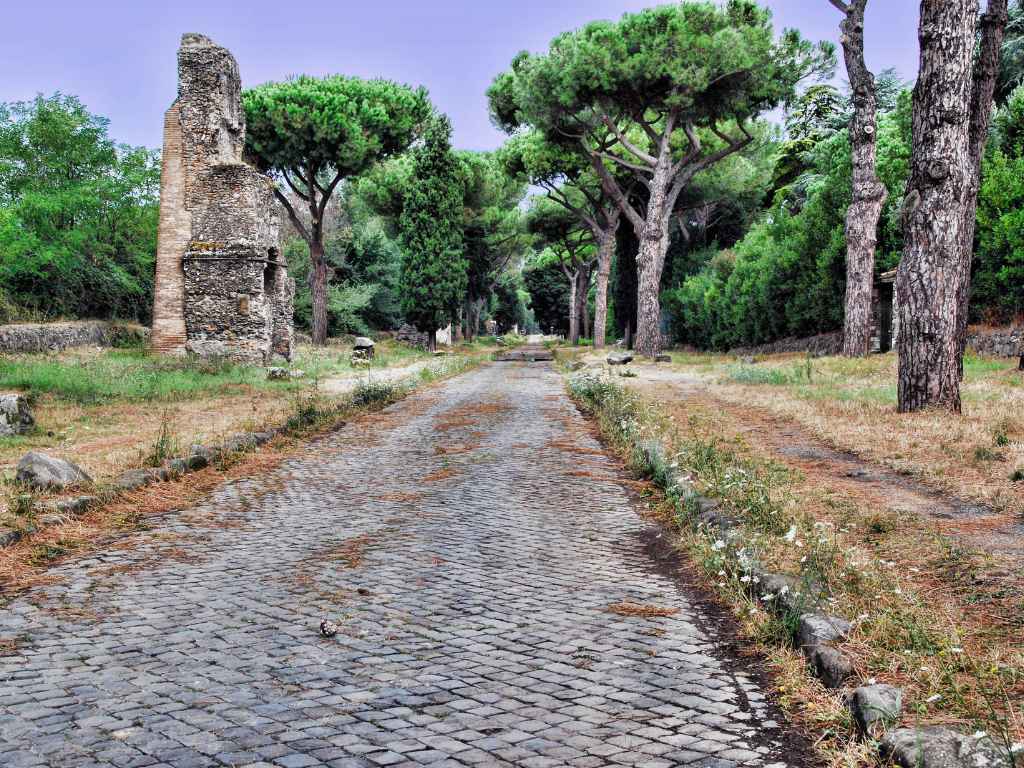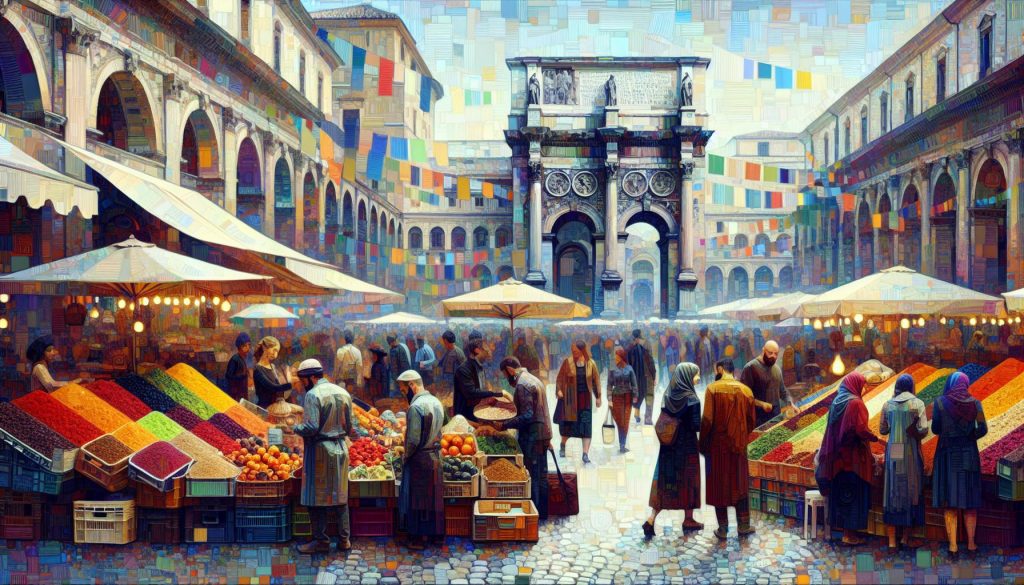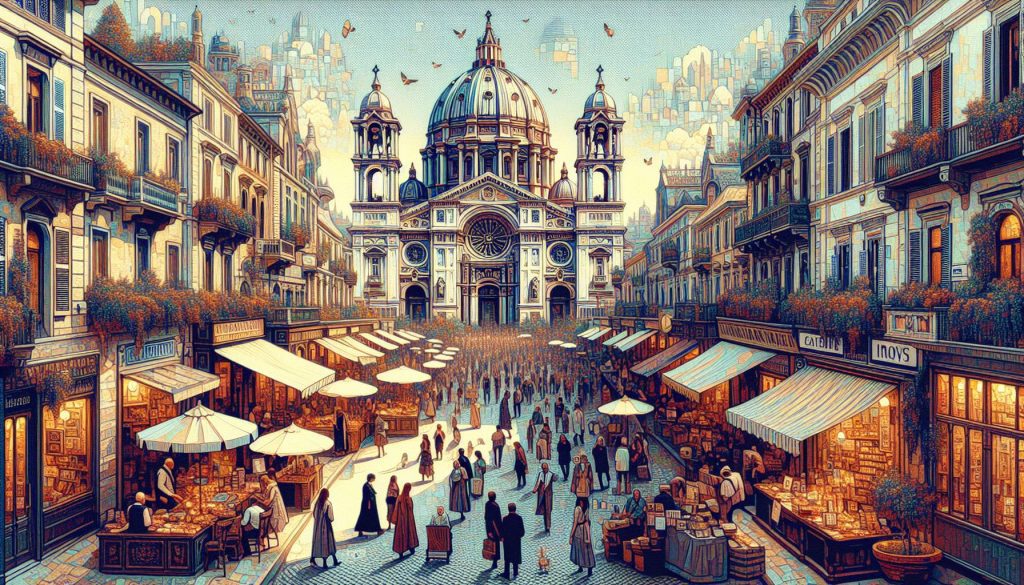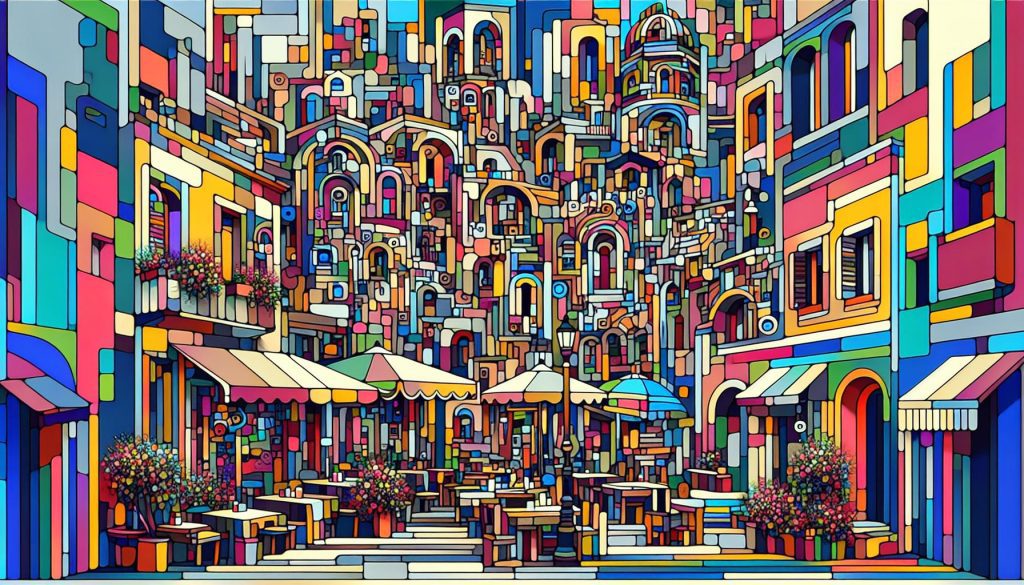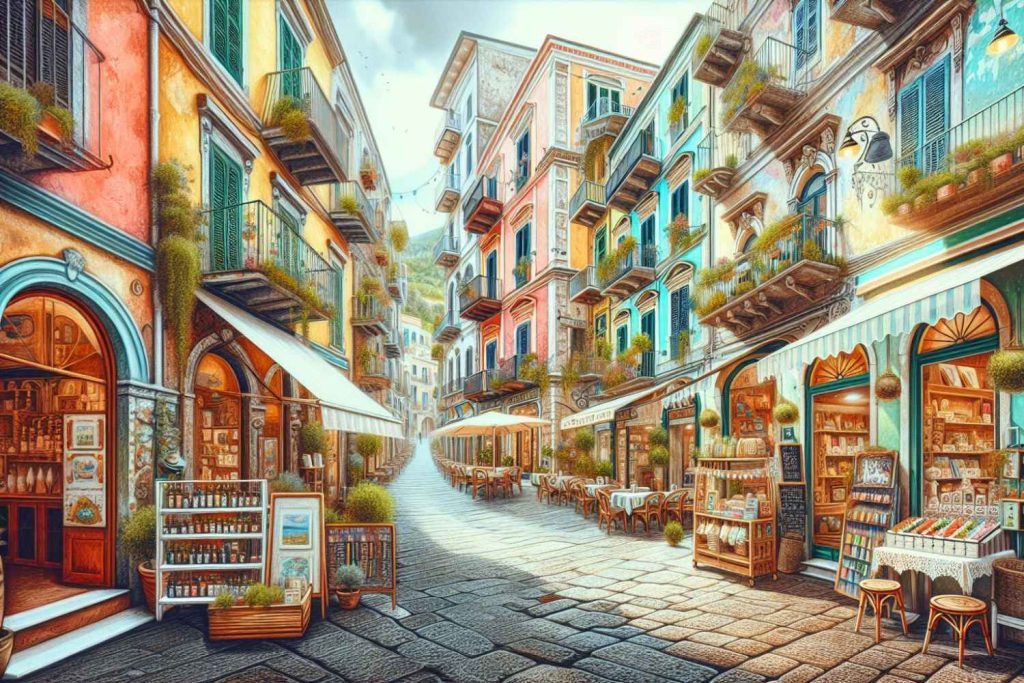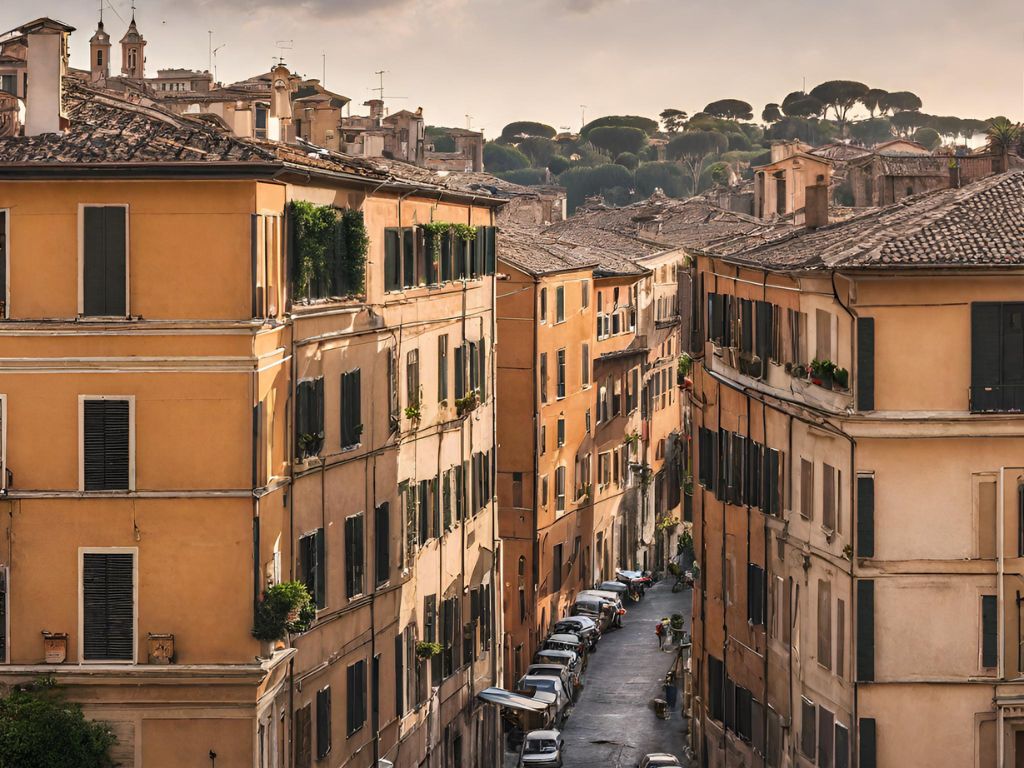Welcome to our brief guide on the fascinating history and rich cultural heritage of Rome! In this article, we’ll take you on a journey through time, exploring the remarkable stories and iconic landmarks that make Rome such a unique and captivating destination.
From the grandeur of the Colosseum to the awe-inspiring beauty of the Vatican City, Rome is a city that breathes history at every corner. As we delve into its past, we’ll uncover the rise and fall of the Roman Empire, the legendary tales of emperors and gladiators, and the enduring influence of ancient Roman culture on the world today.
But Rome is not just a city frozen in time; it is a vibrant and bustling metropolis that seamlessly blends its rich heritage with modern life. Through its vibrant neighbourhoods, delectable cuisine, and passionate locals, we’ll also discover the living culture that makes Rome an irresistible destination for travellers from around the globe.
The Ancient City of Rome: A Brief Overview
Rome, the eternal city, is a treasure trove of history and culture that has captivated the world for centuries. As we stroll through the bustling streets, we can imagine being transported back in time to the ancient city that laid the foundation for Western civilisation.
Founded in 753 BC, Rome has a rich and storied past that has shaped the world as we know it today. From its humble beginnings as a small village on the banks of the River Tiber, Rome grew into a powerful city-state, conquering vast territories and establishing an empire that stretched across three continents.
One of the defining features of ancient Rome was its impressive architecture. The city boasted majestic structures such as the Colosseum, the Roman Forum, and the Pantheon. These architectural marvels not only showcased the technological prowess of their time but also served as symbols of the wealth and power of the Roman Empire.
The Roman Empire, at its height, stretched from Britain to Egypt and from Spain to Persia, encompassing diverse cultures and peoples. This vast empire was governed by a succession of emperors, some benevolent and enlightened, while others were infamous for their cruelty and excess.
In addition to its political and military achievements, ancient Rome also made significant contributions to art, literature, and philosophy. The works of Roman poets such as Virgil and Ovid, and the philosophical teachings of philosophers like Seneca and Marcus Aurelius, continue to influence scholars and thinkers to this day.
However, the glory of ancient Rome eventually faded, as political instability, economic decline, and barbarian invasions brought about its downfall. The empire fell in 476 AD, marking the end of an era.
Yet, the legacy of ancient Rome lives on in the modern city that stands today. Rome is a living museum, with its historical landmarks and ruins serving as a constant reminder of its glorious past. The city is a testament to the ability of a civilisation to endure and reinvent itself.
As you explore Rome you’ll marvel at how the ancient city seamlessly blends with the vibrant energy of the present. The echoes of the past can still be heard in the narrow cobblestone streets of Trastevere, the aroma of freshly baked pizza in the air, and the passionate conversations of locals in the bustling cafes.
Unveiling the Magnificence of the Colosseum
The Colosseum is undoubtedly one of the most iconic symbols of Rome’s rich history and monumental architecture.
- With a seating capacity of up to 50,000 spectators, the Colosseum was the largest amphitheatre ever built in the Roman Empire. Its construction began in 72 AD under the emperor Vespasian and was completed in 80 AD during the reign of his son, Titus.
- The Colosseum was primarily used for gladiatorial contests, animal hunts, and other spectacles that captivated the ancient Romans. These events were crucial in maintaining social order and entertaining the masses.
- Despite its ancient origins, the Colosseum still stands as a remarkable testament to Roman engineering and architectural prowess. Its innovative design, featuring multiple levels of arches and corridors, allowed for efficient crowd control and quick access to seating areas.
- Made mostly of concrete and stone, the Colosseum underwent several modifications over the years, including the addition of a canvas awning system, known as the velarium, to provide shade for the spectators.
- Sadly, the Colosseum fell into disrepair after the fall of the Roman Empire and was subjected to looting and natural disasters. However, it has undergone extensive restoration efforts, making it possible for visitors to witness its grandeur today.
- As you step inside the Colosseum, you can’t help but feel a sense of awe and wonder. The amphitheatre’s sheer size and intricate details are awe-inspiring, invoking a vivid picture of the past and the vibrant events that once took place.
- Exploring the underground chambers and the labyrinthine system of tunnels beneath the Colosseum’s arena floor allows you to delve deeper into the world of ancient gladiators and uncover fascinating insights into their lives.
The Colosseum is not just a historical monument; it represents the resilience, innovation, and cultural heritage of ancient Rome. It stands as a reminder of the city’s glorious past and provides an opportunity for all of us to connect with history in an unparalleled way. Join me on this captivating journey through Rome’s history, and let’s continue exploring the remarkable culture that surrounds us.
Exploring the Treasures of Vatican City
Let’s turn our attention to one of the most iconic and revered destinations in the world – Vatican City. Home to the head of the Roman Catholic Church, Vatican City is a treasure trove of art, history, and spirituality.
1. The Vatican Museums
Your first stop may be the Vatican Museums, a vast collection of art and artifacts from throughout history. Spanning an impressive 9 miles, the museums house over 20,000 works of art, including masterpieces by renowned artists such as Michelangelo, Raphael, and Caravaggio. From frescoes and sculptures to tapestries and archaeological finds, the Vatican Museums offer a truly awe-inspiring experience.
2. The Sistine Chapel
Within the Vatican Museums lies the crown jewel – the Sistine Chapel. This magnificent chapel is renowned for its breathtaking frescoes, most notably Michelangelo’s iconic ceiling masterpiece. The vivid colours and intricate details of the paintings tell stories from the Bible and leave visitors speechless. Standing inside this sacred space, I couldn’t help but feel a sense of reverence and wonder.
3. St. Peter’s Basilica
No visit to Vatican City would be complete without stepping inside St. Peter’s Basilica. This grand basilica is the largest church in the world and is considered a masterpiece of Renaissance architecture. From the stunning dome to the intricate mosaics and statues, every detail of St. Peter’s Basilica is a testament to human creativity and devotion. Climbing to the top of the dome offers a panoramic view of Rome, a sight that will leave you breathless.
4. Vatican Gardens
Beyond the grandeur of the Vatican Museums and the awe-inspiring St. Peter’s Basilica, Vatican City is also home to beautiful gardens. These meticulously landscaped gardens offer a tranquil escape from the hustle and bustle of the city. Walking through the winding paths, surrounded by lush greenery and vibrant flowers, is a serene experience that allows for reflection and appreciation of nature’s beauty.
Rise and Fall of the Roman Empire
Let’s dive into the captivating history of Rome and explore the rise and fall of the mighty Roman Empire.
The Roman Empire began its journey in 27 BC when Augustus, also known as Octavian, became the first emperor. Under Augustus and his successors, the empire expanded its borders, conquering vast territories and establishing a powerful centralised government. This period, known as the Pax Romana, brought stability, prosperity, and the spread of Roman culture throughout the Mediterranean.
During its peak, the Roman Empire stretched from Britain to North Africa and from Spain to the Middle East. It was a time of immense wealth, monumental architecture, and innovative engineering. The Romans built magnificent structures such as aqueducts, amphitheatres, and roads, leaving a lasting legacy in the realms of architecture and infrastructure.
However, with prosperity comes challenges. As the empire grew larger, it became increasingly difficult to manage, leading to political instability and frequent power struggles. Corruption within the government and economic hardships also contributed to the empire’s decline.
The declining years of the Roman Empire were marked by invasions from barbarian tribes, such as the Visigoths and Vandals, who exploited the empire’s weakened state. These invasions, coupled with internal conflicts, eventually led to the fall of the Western Roman Empire in 476 AD.
Yet, it’s essential to remember that the legacy of Rome persevered. The Eastern Roman Empire, known as the Byzantine Empire, continued to thrive for another thousand years, preserving many aspects of Roman culture and knowledge.
The rise and fall of the Roman Empire is a testament to the cyclical nature of history and the inevitable passage of time. By understanding and appreciating this fascinating journey, we gain insights into the foundation of Western civilization and the enduring impact of ancient Rome.
Join me on this enthralling exploration of Rome’s history and culture, as we uncover more marvels that this magnificent city has to offer.
Legendary Tales of Emperors and Gladiators
In ancient Rome, the emperors and gladiators left a lasting impact on history. This era is rich with legendary tales that have captured the imagination of people throughout the ages.
Emperors held immense power and were revered as gods. They ruled with an iron fist, leaving an indelible mark on the empire. One of the most renowned emperors was Julius Caesar, whose military genius and political acumen propelled him to great heights. Unfortunately, his reign was cut short by a tragic assassination in 44 B.C.
Another iconic emperor was Augustus, the first Roman emperor. He established the Pax Romana, a period of relative peace and stability that lasted for over two centuries. During this time, Rome flourished and experienced unprecedented prosperity.
Gladiators, on the other hand, were the embodiment of strength, skill, and bravery. These trained warriors entertained the masses with their awe-inspiring fights in the grand arenas. They faced each other and dangerous beasts with the sole purpose of entertaining the Roman citizens.
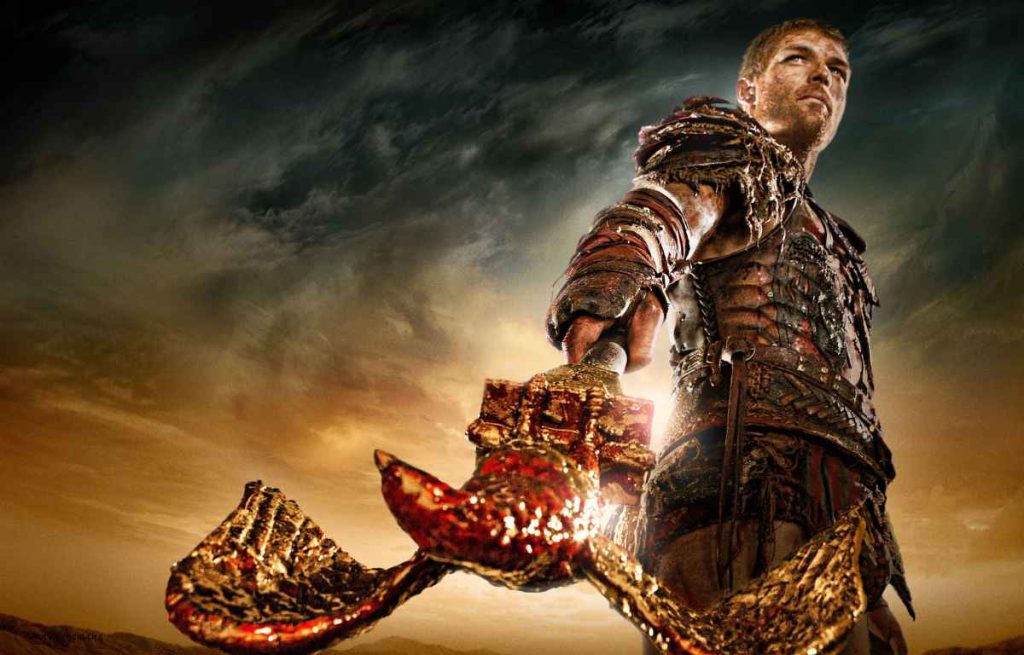
Perhaps one of the most famous gladiators was Spartacus, a former slave who led a successful rebellion against the oppressive Roman Republic. His story of defiance and determination resonates to this day.
But the lives of emperors and gladiators weren’t just filled with glory and adoration. They also faced their fair share of challenges and controversies. Nero, for instance, was a tyrannical emperor known for his debauchery and persecution of Christians. His reign was marked by instability and a disregard for the well-being of the empire.
Despite the hardships and controversies, the legacies of Rome’s emperors and gladiators live on, captivating us with tales of power, bravery, and tragedy.
Enduring Influence of Ancient Roman Culture
When it comes to the influence of ancient cultures on modern societies, the impact of Roman culture cannot be overstated. The Romans were pioneers in various fields, leaving a lasting impression on architecture, language, law, and government. The enduring influence of ancient Roman culture can still be seen today in many aspects of our daily lives.
Architecture: Roman architecture was characterised by grandeur, innovation, and engineering excellence. The Romans built impressive structures such as the Colosseum, the Pantheon, and the aqueducts. These architectural marvels have stood the test of time and continue to inspire and awe visitors from all over the world.
Language: The Latin language, spoken by the ancient Romans, has had a profound impact on the development of many modern languages. Latin roots and phrases are still prevalent in fields such as medicine, law, and science. For example, terms like “ad hoc”, “in situ”, and “et cetera” are all derived from Latin.
Law and Government: The Roman legal system and principles of governance have had a significant influence on modern legal systems and forms of government. The concept of “innocent until proven guilty” and the division of power into executive, legislative, and judicial branches can be attributed to Roman influence. The Roman Republic, with its emphasis on civic duty and political participation, continues to shape democratic societies around the world.
Culture and Entertainment: Roman culture valued the arts, literature, and entertainment. The Romans were avid patrons of theatre, poetry, and gladiatorial games. The influence of Roman entertainment can be seen in modern-day theatre, literature, and sports. The concept of arenas and stadiums for public events can be traced back to the grand arenas of ancient Rome.
Education and Philosophy: Roman culture placed great importance on education and philosophy. The Romans adopted Greek philosophy, incorporating it into their own society. Stoicism, a philosophical school that emphasised self-discipline and rationality, became popular among the Romans and continues to influence modern philosophical thought.
Through its architecture, language, law, government, culture, and philosophy, ancient Roman culture has left an indelible mark on the world. The endurance of its influence is a testament to the immense power and significance of this great civilisation. From the buildings we admire to the language we speak, ancient Rome continues to shape and enrich our lives.
Conclusion
Roman history has had an enduring influence on modern societies. From architecture to language, law to philosophy, Roman culture has left an indelible mark on our world. The grandeur and engineering excellence of Roman architecture can still be seen in iconic structures like the Colosseum and the Pantheon. The Latin language, spoken by the ancient Romans, has shaped the development of modern languages. The Roman legal system and principles of governance have influenced modern legal systems and forms of government. Roman culture’s appreciation for the arts and entertainment continues to inspire modern-day theatre, literature, and sports. Even Roman education and philosophy, particularly Stoicism, continue to shape our modern thought. The enduring influence of ancient Roman culture is evident in various aspects of our daily lives, from the buildings we admire to the language we speak.

I’ve been creating content and applications online since 1996. I’ve created several successful online businesses and enjoy creating content and tools that people enjoy using. I love to travel with my family and have visited more than 50 countries across all continents. We’re building the Visit.Network to bring interesting travel guides to travellers around the world.
More articles you might like...
You can find more great Rome content in the following categories;
All about Vatican City Commonly Asked Rome Questions Rome Accommodation Rome Food and Drink Rome History and Culture Rome Neighbourhoods Rome Tours and Must-See Attractions
